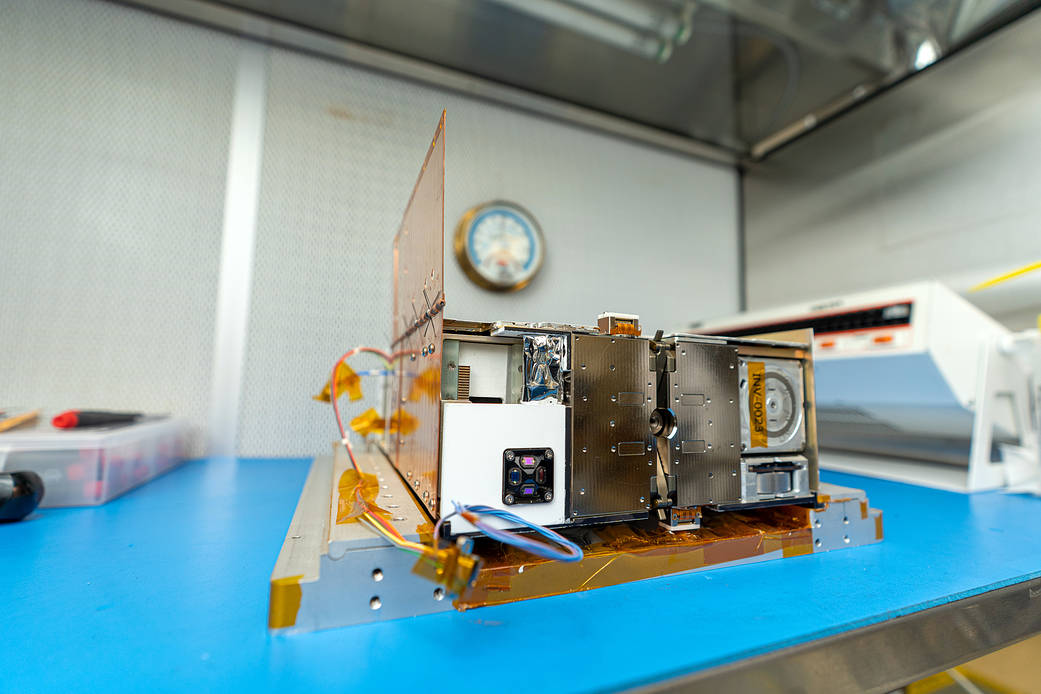The Lunar IceCube CubeSat successfully passed essential environmental testing at NASA’s Goddard Space Flight Center in Greenbelt, Maryland. The spacecraft, pictured above, will fly aboard the upcoming Artemis I mission to the Moon as a secondary payload to investigate the amount and distribution of water ice on the Moon.
The spacecraft must go through intensive testing on Earth before flight to ensure the systems can survive a rocket launch and perform in the harsh environment of space. Lunar IceCube’s testing included thermal vacuum, which replicated the vacuum of space by draining the atmosphere from the chamber and exposing the spacecraft to extreme hot and cold temperatures.
Once it reaches orbit, Lunar IceCube will begin its mission. NASA’s Artemis program is returning humanity to the Moon, but this time to stay. By understanding the dynamics of water and other substances on the Moon that easily turn to vapor or gas, scientists will be able to predict seasonal changes and determine possible uses for lunar resources such as water.
Engineers also conducted instrument testing and calibration for the Broadband InfraRed Compact High-Resolution Exploration Spectrometer (BIRCHES) on Lunar IceCube that will help map the distribution and dynamics of water on the Moon’s surface. This helped verify the instrument’s functionality.
With testing complete, the Lunar IceCube spacecraft will return to Morehead State University where it was built, and after additional testing will be sent to NASA’s Kennedy Space Center in Florida for integration into the Artemis I mission – the first integrated test of NASA’s Space Launch System rocket, Orion spacecraft, and exploration ground systems. The information collected by Lunar IceCube will inform NASA’s future Artemis missions and help the agency establish a sustained presence on the Moon and eventually on Mars.
Lunar IceCube is funded by NASA’s Next Space Technologies for Exploration Partnerships program in support of NASA’s Advanced Exploration Systems Division within the Human Exploration and Operations Mission Directorate. The Lunar IceCube mission is led by Morehead State University in Morehead, Kentucky, NASA’s Goddard Space Flight Center, NASA’s Jet Propulsion Laboratory in Southern California, NASA’s Katherine Johnson Independent Verification and Validation Facility in Fairmont, West Virginia, and Busek Space Propulsion and Systems in Natick, Massachusetts.
By Katherine Schauer
NASA’s Goddard Space Flight Center

























